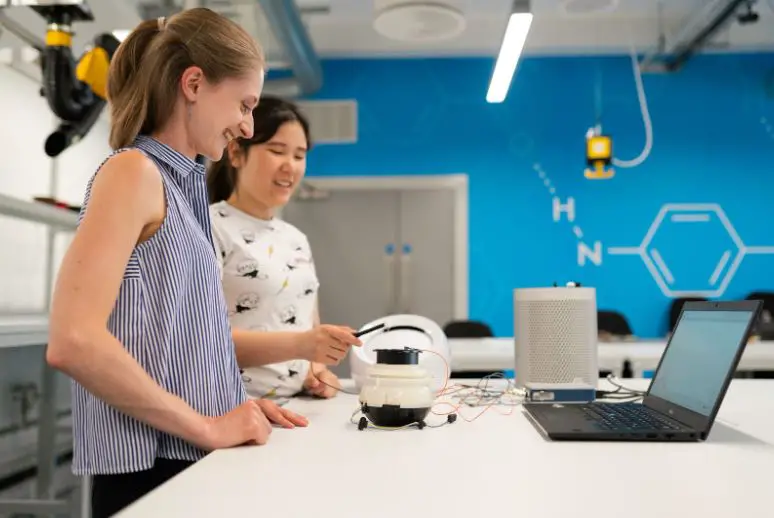How to Integrate Hands-on Science Experiments in Remote Learning

While integrating hands-on science experiments in a school lab is mostly easy and requires a set of rules and precautions, trying to achieve the same thing in a remote learning environment is quite challenging. The poor attention span and inability to control every remote learner without physical control require additional planning and creativity. The secret trick here is implementing the same inspirational elements that many students already know from social media, TEDx videos, and YouTube workshops. Once you keep things inspiring and turn them into a game or a competition, the learning process will be way more motivational!
- Create Interesting Scientific Learning Materials.
Always start with accessible and inspiring learning materials that help students see several experiment examples that can be used in real life. If you are lost for ideas or do not know how to go beyond the textbooks, ask your students for help. In case you already have some ideas but cannot narrow them down, think about sharing write my paper message with a trained specialist in your area to have another pair of eyes that can help you make things more accessible and inspiring!
- Make Custom Student Sessions.
When you have a struggling student who does not feel inspired by STEM subjects or cannot understand a subject due to a different learning pace, consider starting one-to-one lab virtual sessions. It will help make the learning process more interesting and help you outline the lesson as you adjust and improve it during the process. It will also help to address weaker students’ needs.
- Provide Group Works.
A hands-on science experiment always goes much better when students work in a team and work on something that they can present as a class. A group task will also help you to ensure that all students tend to achieve the same task, which helps to control the same process. As a teacher, you will be able to save valuable time as you provide instructions and share an outline with every student as you see what can go wrong or where your students may be struggling.
- Create Virtual Shows With Competitions.
Since it’s almost impossible to keep remote students inspired without a secret trick, provide them with shiny presentations. Even if you walk an extra mile to add more pictures and examples, it will take things to new horizons. When unsure, see how it’s done in TEDx videos or scientific multimedia podcasts. Create competitions and divide your classes into two teams by assigning different roles. It will bring more fun and help you to move further through the STEM curriculum. Do not ignore the preparation part by explaining how each experiment can be done in a more creative way and what items must be prepared in advance!
- Challenge Students With Ideas.
Remember to challenge your students with ideas by discussing what they would like to learn. It can be achieved with the help of special surveys and a list of questions. Discuss sci-fi movies and the daily objects where the science can be adjusted to a specific subject. It will make things way more interesting as every student can get his or her ideas and objectives discussed and learned. You can also make virtual field trips and visit scientific museums all over the world to keep things even more interesting!
Let Students Participate and Discuss Things
While a hands-on science experiment will be limited in terms of time and frequency based on a school’s curriculum, do your best to take things to another level by creating an online forum for further discussions where students can ask questions, discuss problematic aspects, ask for help, or practice their technical skills. The same is true for the use of regular feedback that will help students voice their concerns and learn how to get ready for the upcoming hands-on experiment without missing all the important things. Since we talk about doing things remotely, this type of additional guidance will help create an emotional bond and decrease high levels of stress. It will help virtual students realize that they belong to the community and can work together even remotely.
